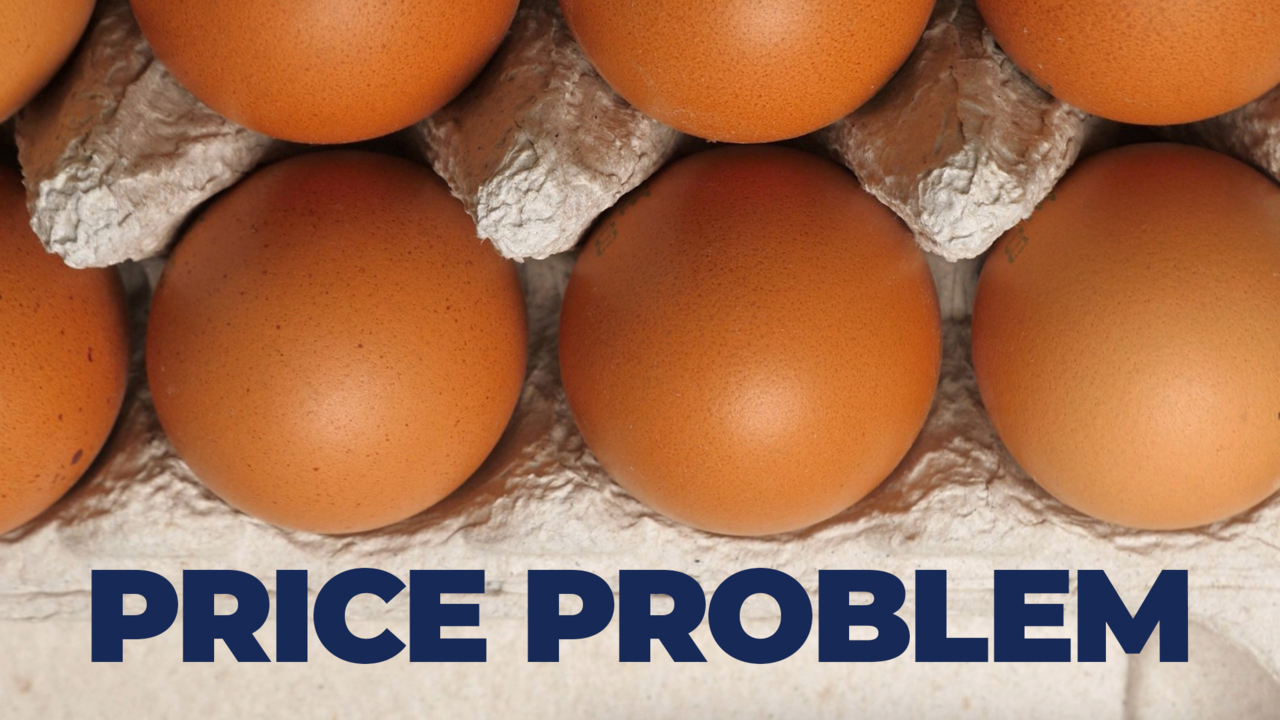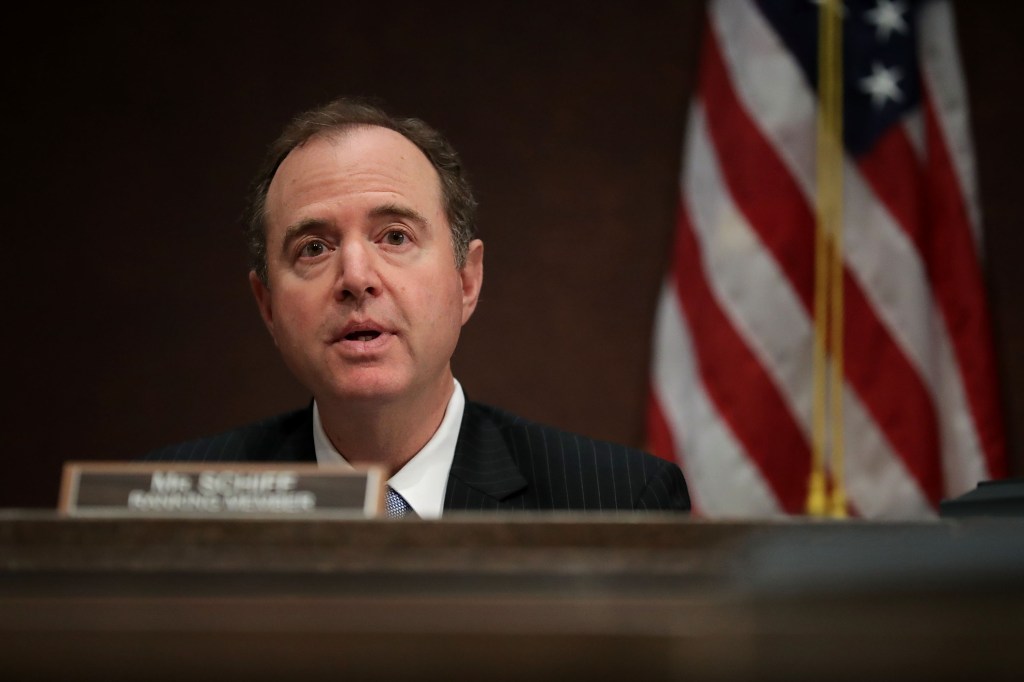
SIMONE DEL ROSARIO: Your trips to the gas station are costing you a lot less than just a few months ago. But then you go to the grocery store where prices keep going up. In fact, grocery prices have surged more in the past year than any other years since 1979. You stand on that checkout line and you wonder when will food inflation finally go down? Damian Mason, a farm owner and the host of the business of agriculture podcast is joining me now. Damian, what would you say are the main culprits of food price hikes, especially now that transportation costs have peaked?
DAMIAN MASON: Yeah, we still have a lot of energy costs in our food, you know, when you look at, let’s just say, a box of cereal, there’s about 17 cents of grain in the average box of cereal, there’s a heck of a lot more fuel cost, you know, diesel has not come down as precipitously as gas has. And then you got to talk about labor. You know, we’re still talking about moving into some unemployment. But we still are also talking about a lot of labor costs, you know, and you got things like California saying they’re gonna push wages to $22 for a minimum, I mean, there’s a lot of pressure on those prices for labor. So there’s a lot of human hands handling your food. And there’s also still a lot of diesel in there. Those are two of the big factors, frankly.
SIMONE DEL ROSARIO: What do you think is gonna take for food prices to go down? And when do you think that could actually happen? I think that’s the big question here.
DAMIAN MASON: Yeah. So you know, the old thing Simone, they always say the cure for high prices is high prices, because you know, economically when things get too high, then demand lowers, well, it’s hard to do that on something that’s as necessary as food. You know, if the price of lounge chairs goes up too much, people stopped buying lounge chairs, you can live without lounge chairs, you can’t live without food. So the inelasticity of demand, as we call it, when it comes to food makes it tougher to do usually then supply will feed this if there was a situation, say out here in agricultural world where I live in Indiana, and say, All right, man, corn and soybeans are worth so much, I’m gonna plant more of them gonna do more to produce more of them. And then by doing that, you feed the supply, which brings down the prices because demand stays constant. tough part is, as I said, there’s not a lot of actual commodity cost, I think it’s about 15% of the price you pay at the grocery, that’s actual commodity, meaning at the farm gate, the price. So again, it’s going to take an adjustment on these other fronts. And when you look at that it doesn’t look very promising fuel is still at a pretty high number compared to two years ago, labor prices are a bit higher than they were two years ago. But then there’s things like interest rates, you just probably saw the cover story there last week, mortgage interest rates are over 6%. Now, well, that’s also cost of money for operating loans. And for all the money that is, you know, in our economy that’s going through a leveraged system. So I think it’s going to be a challenge. I don’t see it getting good in the next several months, frankly, we remember you talked about 1979 There were the highest food inflation since then. 40 some odd years ago, I lived through those days. And I’m old enough to remember when you went to the store, you got generic beer. And you know, it wasn’t Miller High Life or Budweiser with the rise of generics came about in 1979. And I remember those days and it was persistent, frankly, for you know, multiple years there. So I’m afraid that we’re going to be in this for a couple more years.
SIMONE DEL ROSARIO: Okay, you touched on this because we can’t get away from food inflation. It’s unnecessary spending category for us. But how have Americans started changing their habits over these food prices?
DAMIAN MASON: Yeah, one thing that we talk about in agricultural economics is the protein at trade down effect you you go from steak to burger burger to pork chops, pork chops to Sausage, sausage to chicken breast, chicken breasts to you know, lower cuts of chicken down to you know, what’s ever under that. And that brings up eggs. Eggs are the cheapest protein animal protein source and they eggs are up 40% year over year. Good news is eggs are still pretty affordable in terms of just if you need to feed your family protein. Bad news is you put 38% of a price increase year over year over this. Nobody’s paycheck went up 38%. So we see already happening and Tyson announced this two weeks ago the protein trade down effect Simone, we’re consumers are switching down to lower cuts and lesser categories of meat that will happen I know the vegetarian crowds is Oh, that’s great. And the reality is only about 2% of the country is actually vegetarian. So you know families still want to feed their children, you know, animal protein, because it’s it makes you strong. So there’s that going on, you’ll see the rise of generics store brands, consumption of store brands rather than buying Campbell’s Soup. Maybe you buy Kroger soup that’s happening already. So we’re already seeing a consumer trade down. It’s been going on for about six months and I believe it’s indicative that we are indeed in a recession.
SIMONE DEL ROSARIO: I want to talk about Tyson Foods who just brought it up, you know, they claim they’re asking customers to only pay for the inflation they see in the supply chain. But their first quarter profits this year nearly doubled. The second quarter net income was up 74% from a year ago. Third quarter. They said they’re raising those chicken prices again, because as you said, people are buying chicken more because they can’t afford beef. So what role does profit inflation play here?
DAMIAN MASON: There’s no question that profit is part of the mix. When you talk about the cost of again, everything we’re box of cereal to a package of chicken breast, you’ve got energy cost, you’ve got insurances, interest rates, labor, but there’s no question that the companies that can get away with it are pushing through profits grocery stores, Simone also are in that category, historically, very low margin, industry grocery and you’re talking like a one load single digit margins over history. And they have bumped that. So you look at Kroger, you look at Walmart, you look at Tyson, there’s no question these companies realize there’s an opportunity. They seem to have gotten through with using the COVID Excuse using supply chain as an excuse, you know, we’re two and a half years removed from the first shutdown from the economy. Is it really that? Or is it that these companies realize they can? I won’t say gouge because that sounds like we’re being anti capitalistic. But there’s no question that these companies, Simone are taking advantage of a situation and passing on some bigger costs and costs bigger than what they actually are facing to pad their margins. And there’s that that’s the reality for sure. And by the way, you don’t want change, that is when the consumer finally switches off. But that’s a tough thing to do. Consumers say, you know, I still have to eat.
SIMONE DEL ROSARIO: Yeah, that’s my last question for you, then we can’t get away from buying food, we can try to change our habits a little bit. But when you’re talking about a company like Tyson Foods, which really dominates the market there, what can be done? What can be done by American families? What can be done by the government’s point?
DAMIAN MASON: Yeah, and I don’t know about the government, because then you’re talking about trust busting? And is that really what we want to see happen? Because there are four companies that control 85% of the meat trade in the United States of America, you know, you go through groceries, once you get past Walmart and Kroger and a couple others, you essentially have gotten all the groceries handled. So when you get to an oligopolistic system, Simone, where four companies essentially controls so much of the pie, they are able to, shall we say work in concert together to pass along higher prices to you? So is the answer that the government does trust busting? You know, if we saw it, or Teddy Roosevelt, where we go and break up these companies? How effective is that? Remember, we broke up Ma Bell 20 or 30 years ago for those of you that can remember that? And what do we have now? We have Verizon and T Mobile and a couple other companies that essentially are still in control of our, our communications. So would that matter? I don’t know that government intervention is the answer. What’s the consumer to do? Well, the consumers already doing it. Because you know, everybody understands kitchen table economics, the consumers already switching off and paring down, and the consumers already buying store brands. Will we see an adjustment? I believe that we will, because there will start to be some political pressure and then you get to where it’s the will of the people the political pressure versus the shareholders. And I believe that eventually, what ends up happening we hope is that there ends up being more supply of everything. And when there’s more supply of everything, it brings down prices, because demand tends to stay about constant when it comes to food.






